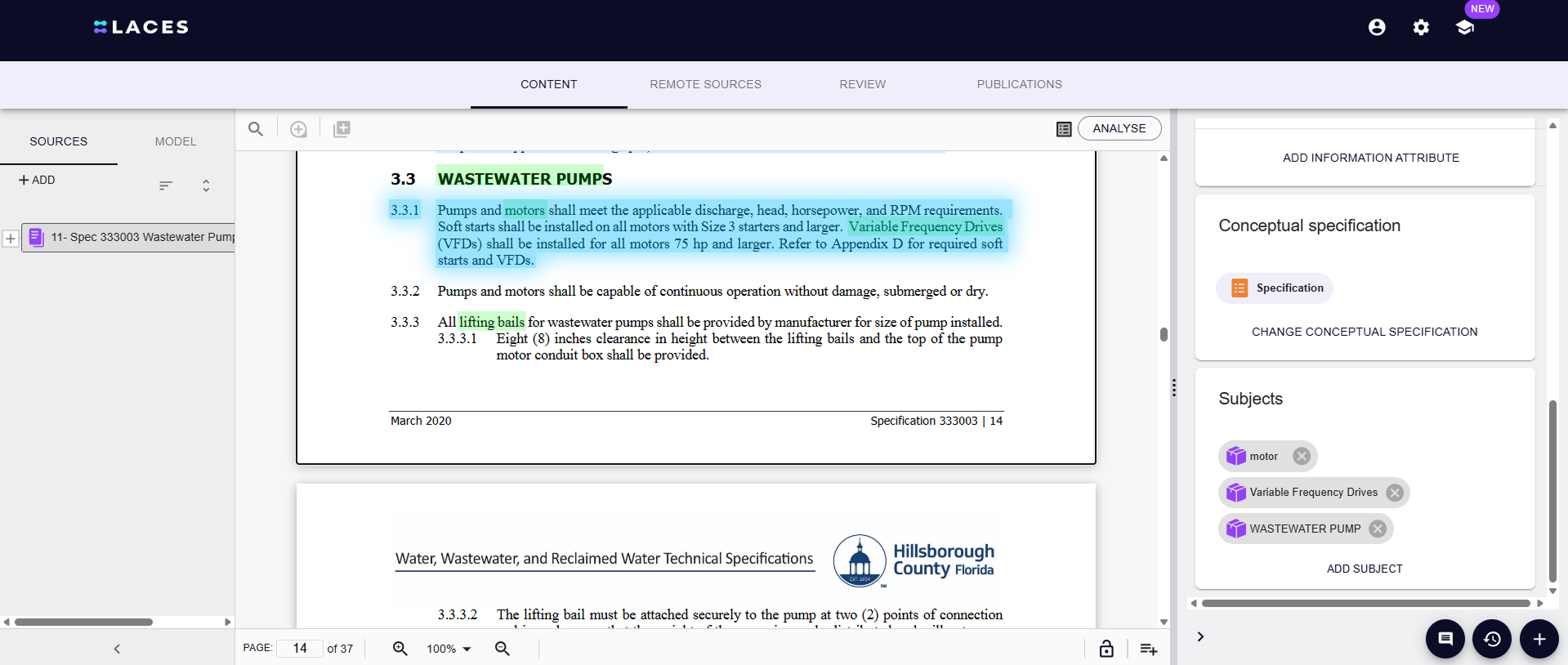Structure, Link, and Reclaim Control Over Requirements
- Insight
In today’s complex engineering landscape, clarity is non-negotiable whether you’re working on a new satellite platform, an electric vehicle, or a regional water system. The systems we build are more complex, integrated, and dependent on data than ever before. And yet, one of the most critical ingredients for success, the specification, is still too often treated as static documentation. Once written down in a Word, PDF, PowerPoint, or Excel file, a requirement tends to remain isolated: difficult to trace, hard to verify, and disconnected from the subjects, people, or parts it’s meant to support.
Modern systems engineering demands a different approach. Requirements are no longer just contractual checklists but core building blocks of your system architecture. When appropriately structured and linked to the right context, they become active components of your engineering process. They drive collaboration, enable reuse, reduce risk, and make compliance less of a burden and more of a byproduct.
This is where structured, linked requirements come in. And this is where engineering teams can regain control.
Structuring Requirements Is More About Meaning Than Order
Every project or development of a product begins with needs. These needs come from stakeholders, legal frameworks, technical standards, tender documents, or prior experience. But they don’t become usable until they’re translated into structured requirements; clearly defined, enriched with attributes, and integrated into your system model. This means classifying each requirement: is it functional, interface-related, safety-critical, or performance-based? Then, placing it at the right level of abstraction, system, subsystem, or component, and connecting it to the broader architecture.
This process transforms a static sentence into a living piece of system knowledge. It can now be verified, traced, reused, and even automated. Instead of passively describing what the system should do, it actively shapes how the system is developed, tested, and maintained.
Take, for example, a requirement in the development of an electric vehicle: “The electric range must be at least 500 kilometers.” On its own, this is just a high-level statement. But when broken down, it drives detailed specifications across multiple domains: the energy capacity of the battery, the efficiency of the powertrain, the thermal performance in different climates, and the behavior of the energy management software. These refinements can then be assigned to different teams, linked to relevant components, and traced back to the original requirement. This ensures that everyone is working toward the same goal and provides a mechanism for verifying that the goal has been met.
Requirements Need Context to Be Useful
For requirements to be more than isolated statements, they must be connected to the broader environment in which the system exists. This includes physical components such as sensor units or control panels, tasks like installation or maintenance, and even human actors like contractors, regulators, or project engineers. In structured engineering environments, requirements are also linked to the objectives they support, such as safety, sustainability, or uptime, and to the verification methods that prove they’re being met, whether through simulation, testing, or inspection.
By explicitly building these links or connections, you create a network of knowledge that makes your engineering system understandable, navigable, and auditable. You can explore how a single requirement cascades down into different design decisions. Or see how a change in one regulation affects dozens of components. You move from managing a document to managing a system.
What Laces Brings to the Table
This is precisely the kind of work Laces was designed to support. It helps engineers take control of their specifications by turning them into structured, linked, and reusable data, all within a user-friendly environment.
With Laces, you can extract requirements directly from source documents and translate them into formal model elements. Each requirement can be enriched with metadata, classified according to international standards, and linked to relevant ‘subjects’ like physical objects, activities, objectives, documents (e.g., legal references), or verification methods. Laces makes it easy to maintain traceability across system levels, from the top-level business objective to specific technical constraints at the component level.

Image 1: Laces environment; extracted and enriched requirement.
This approach is not only more rigorous but also more efficient. It enables teams to reuse specifications across projects, identify inconsistencies early, and automate parts of the verification and validation process. The result is fewer surprises, better collaboration, and systems that are more likely to perform as intended by the design.
The Bigger Picture
Ultimately, structuring and linking specifications isn’t just a technical task. It’s a strategic capability. It gives engineering teams control over complexity and ensures that design choices remain connected to real-world needs. Whether delivering the next generation of smart infrastructure or managing a safety-critical upgrade to an existing platform, turning your requirements into structured, linked data gives you a clear edge.
Want to see how this applies to your system or process? Schedule a conversation with our experts and discover the value of structured, connected specifications.
Structure, Link, and Reclaim Control Over Requirements
In today’s complex engineering landscape, clarity is non-negotiable whether you’re working on a new satellite platform, an electric vehicle, or a regional water system. The systems we build are more complex, integrated, and dependent on data than ever before. And yet, one of the most critical ingredients for success, the specification, is still too often […]
ReadWhy You Should Use Laces to Simplify Verification and Compliance
Verification plays a critical role in industries where precision, safety, and accountability are non-negotiable, whether you’re designing infrastructure, building vehicles, or manufacturing medical devices. Yet, for many teams, managing the verification process is still a complex, manual, and error-prone task. This is where the Laces Requirements Manager comes in. It simplifies the planning and execution […]
ReadExtracting Specifications from Documents: Manual vs. NLP-Based Extraction
Extracting, interpreting, and applying specifications from technical documents, like standards, contracts, or regulations, is often a necessary but painstaking part of project or product management. Traditionally, this has been done manually, but recent advances in Natural Language Processing (NLP) have opened up new, intelligent alternatives. In this blog, we’ll explore the differences between manual and […]
Read

